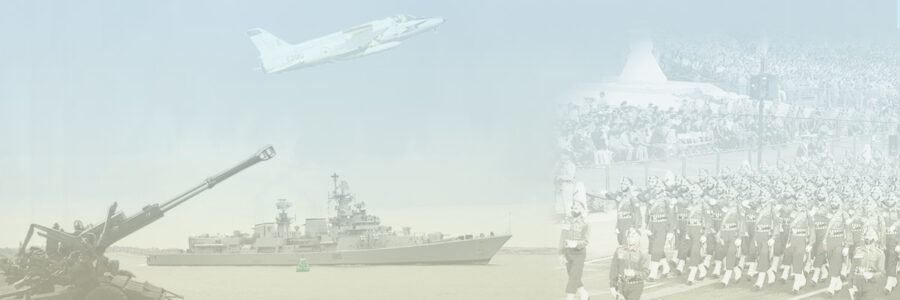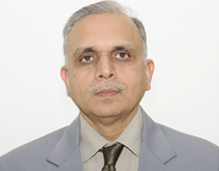Conventional War in the Presence of Nuclear Weapons
Nuclear weapons cannot obviate wars, but can change its complexion and influence the manner of its conduct. In order to keep nuclear weapons from entering into real warfare, it is important to intelligently judge an adversary's nuclear thresholds and to calibrate one's own conventional strikes. For India, the exploration of this space is particularly important in order to deny Pakistan a free hand to indulge in sub-conventional conflict even as it holds the threat of an all-out nuclear war against an Indian conventional response.
Kargil War: Reflections on the Tenth Anniversary
Ten years later, the Kargil War still arouses deep emotions turning around Pakistan's gross perfidy, an intelligence failure, great heroism, military improvisation and innovation, a national upsurge, a most open inquiry leading to a comprehensive review of vital issues long closed to scrutiny and reform. Its report, prepared in record time, was uniquely presented to the nation as a commercial publication. (From Surprise to Reckoning: The Kargil Review Committee Report, Sage, New Delhi, December 1999.)
Reflections on the Kargil War
The Kargil conflict can be categorized as a 'limited war'. It was initiated by Pakistan to achieve mixed military and political objectives, but made important misjudgments that doomed the enterprise to failure. The questions discussed in this article are: why was India surprised; why did both countries observe such great restraint; did the Kargil conflict have a nuclear dimension; and is 'limited war' a viable concept with nuclear deterrence obtaining in South Asia. It also argues that the Kargil conflict was an exception, in some dimensions, to the 'stability-instability paradox'
India-US Combined Defence Exercises: An Appraisal
This paper is an endeavour to appraise the importance and 'value' of India-US defence exercises for Indian policy makers. It examines their dividends, costs, and pitfalls. The paper argues that such combined exercises are not only useful in functional terms but are also necessary. While such exercises are invariably embedded in inter-state relations and grand-strategic issues, in this case the paper confines itself to operational and military-strategic issues.
Who Won the Second Israel-Lebanon War?
In the immediate aftermath of the Second Israel-Lebanon War, most observers have concluded that Israel lost its war against Hezbollah. Although at the end of 34 days of violent engagement there is no clear victor or loser, this article, on the contrary, argues that Israel succeeded in achieving the most important among its political and strategic objectives.
Trafalgar and Tsushima: Relevance for India
The one-armed picture of Lord Nelson, perhaps the most celebrated and eulogised of British seafarers, is synonymous with the victory at Trafalgar and the bicentennial celebrations of this famous sea battle began on June 28 with an International Fleet Review in the Solent off south England. India apart, the 35 participating navies include the French and Spanish navies who were defeated by Nelson’s superior skills in that decisive battle on October 21, 1805.
Issues and Challenges in Modern Peace Operations
In the last decade, there have been fundamental changes in the nature, form and variety of peace operations. In fact, the very coining of a new term, ‘Peace Operations’ (PO), as distinct from the earlier ‘Peacekeeping Operations’ (PKOs), illustrates a new degree of diversity and complexity in these operations. India has been, and continues to be, a major player in UN Peacekeeping Operations (UNPKOs). It has participated in 41 of the 59 UN Missions established so far and has contributed more than 70,000 personnel.
Military Diplomacy Through Arms Transfers: A Case Study of China
Military diplomacy has long been one of the essential constituents of international diplomacy and an effective method to foster bilateral and regional relationships. Arms transfers serve as an important foreign policy tool and have become, a crucial dimension of world politics. Conventional arms transfers entail not only the provision of weapons/ equipment but carry with them a number of military commitments that have long‐term implications. The PLA has always had a significant role in shaping and implementing China's foreign policy.
Operationalising the Gorshkov: An Appraisal
The paper takes a critical look at various issues connected with India’s acquisition of the Russian aircraft carrier, the Admiral Gorshkov. It examines India’s choice of fighter and various problems it is likely to face in making the carrier operational and fully effective for its task. It recommends the early acquisition of aerial refuelling and early warning systems by the Navy. The paper also argues for greater jointmanship among the services and an increase in specialist cross-postings in order to improve inter-service rapport and the pool of trained manpower.
Network Centric Warfare in the Context of ‘Operation Iraqi Freedom’
The Revolution in Military Affairs (RMA) moves on the wheels of Technology, Doctrine and Organisation; however, the main support structure, which gives it the predominant strength, is undoubtedly the technology. The changing concepts of warfare are driven by the available technology of the times. While sophisticated weapons and sensors have greatly enhanced combat efficiency, developments in Information and Communication Technology (ICT) have enabled greater connectivity and information sharing among widely spread force components.
Military Innovation: Hurdles, Bumps and Jumps
Military innovation is peculiar and distinctive, and has no direct parallels. The military environment itself, with focus on hierachy, discipline and tradition makes innovation a daunting challenge. The process is further influenced by civil-military relations and metrics used for measuring effectiveness of innovative efforts. Factors influencing the process of military innovation vary when examining innovation at the policy and strategy level, at the doctrinal level, during peacetime and under conditions of war.
The 1962 India-China War and Kargil 1999: Restrictions on the Use of Air Power
The paper examines the utilisation of air power in the 1962 India-China war and in the 1999 Kargil conflict. The study reveals a certain continuity in the attitudes to the use of offensive air power in limited conflicts. Both in 1962 and in 1999, the use of air power was hedged about with various restrictions. Underlying these appears to be the belief that the use of offensive air power is fundamentally escalatory. Hence there is a hesitation to commit offensive air power assets.
Cooperation in Military Training as a Tool of Peacetime Military Diplomacy
Military diplomacy has long been one of the essential constituents of international diplomacy and an effective methodology, to foster bilateral and regional relationships. Military training cooperation is an essential component of military diplomacy and helps to build close ties with other nations. Such cooperation also helps to strengthen strategic security relationships and address common security concerns. The Indian armed forces have rich expertise of operating in varied terrain, as also live combat experience in a vast spectrum of operations.
Conceptualisations of Guerrilla Warfare
Guerrilla warfare is not a new phenomenon and history is witness to its repeated occurrence. In the modern era, it acquired prominence during the Napoleonic Wars which led to an examination of its role by leading nineteenth-century thinkers including Clausewitz, Jomini, Marx and Engels. Over the course of the subsequent century, the concept and practice of guerrilla warfare was integrated within social, economic and political programmes that aimed to overthrow established authority and transform society through an armed struggle.
The State and the Military: Perspectives on Nigeria-USA Military Cooperation
The official position of USA and Nigeria in favour of military cooperation rather than a military pact does not necessarily demean its value in defence and strategic thinking. The withdrawal of military assistance to Nigeria on March 23, 2003 should be seen as a strong protest against Nigerian reservations on the US-led war on Iraq rather than a complete end to it.

















